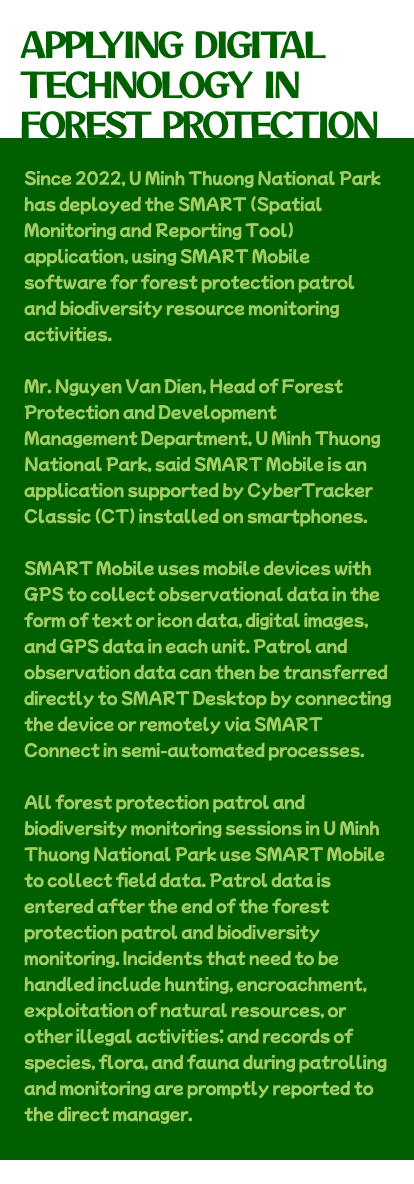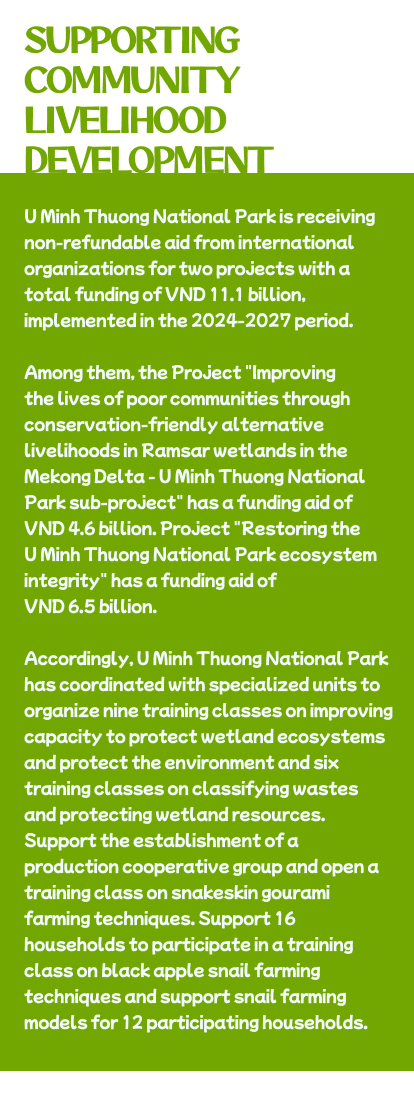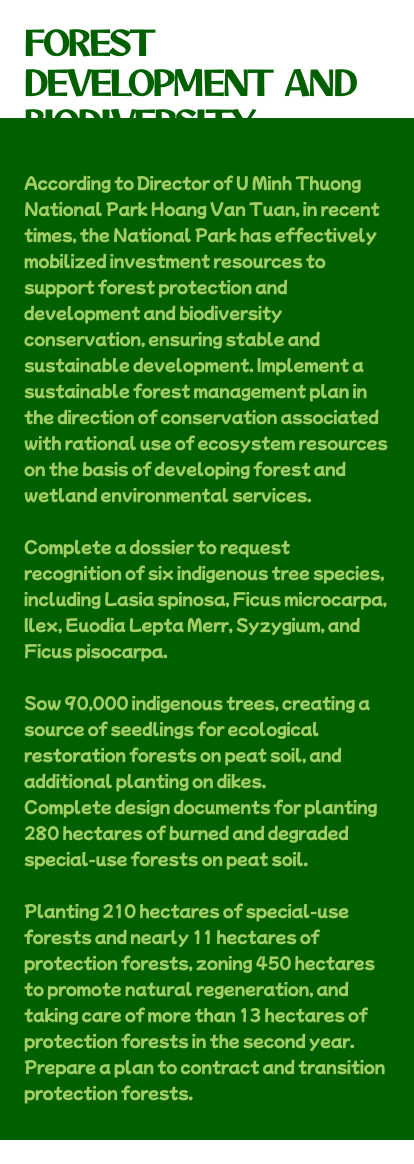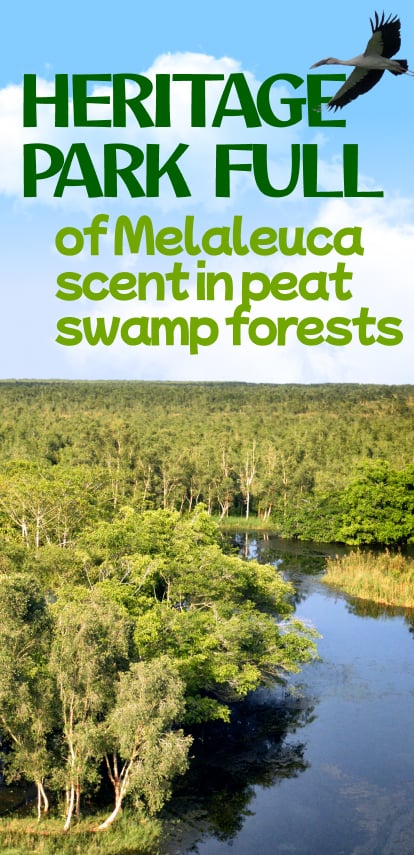
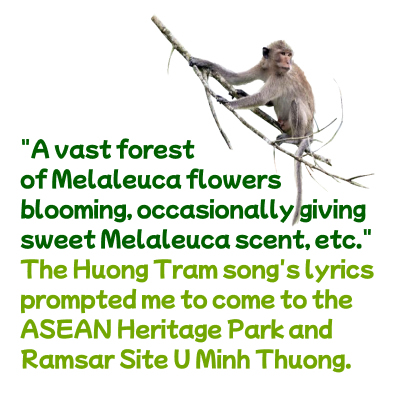

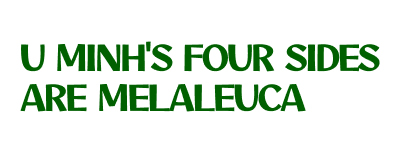
Trem River curves like a giant python's slithering track, dividing U Minh Land into two halves like people dividing an orange in half. The upper half is U Minh Thuong in Kien Giang province, and the lower half is U Minh Ha in Ca Mau province. Both the upper and lower areas today are National Parks, likened to "huge natural treasures" containing biodiversity, culture, and history that formed the remote land in the Southwest of the country.
U Minh Thuong National Park has a total natural area of approximately 8,510 hectares, including 8,038 hectares of special-use forests and the rest being protection forests. The National Park is located in An Minh Bac and Minh Thuan communes, U Minh Thuong district.
U Minh Thuong National Park is one of two important areas of peat swamp forests remaining in Vietnam and is recognized as one of three key areas of the Kien Giang Biosphere Reserve, as the ASEAN Heritage Park, and as the wetland conservation area of international importance (Ramsar site).
Dr. Tran Van Thang, Deputy Director of U Minh Thuong National Park, said: "More than 20 years after the big fire disaster, the forest here has had a spectacular recovery, with forest coverage reaching nearly 70% of the area." According to statistics, the current forested area in the National Park is about 5,580 hectares, including 3,848 hectares of natural forests and 1,731 hectares of planted forests. Unforested land and a system of embankments and water reserve canals are 2,459 hectares. Coming to U Minh Thuong National Park today, we will see with our own eyes that all four sides are Melaleuca trees, the vast forest of Melaleuca flowers blooming and fragrant scent, bringing sweetness to life."

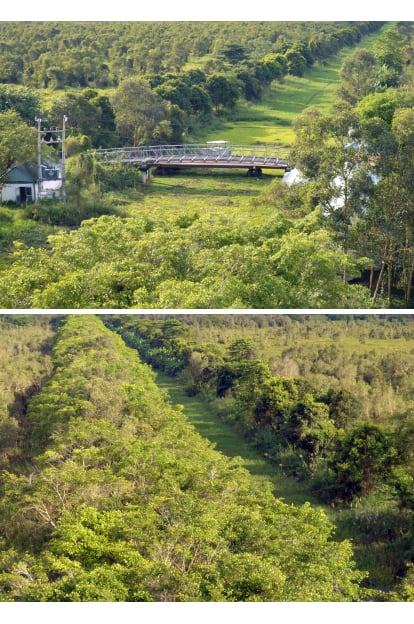


Regarding natural landscape, U Minh Thuong National Park has diverse forest resources with many animal and plant species that are high-value and significant in biodiversity conservation.
This place has Vietnam's unique and special alum-flooded forest ecosystems, with high biodiversity value. According to research results, U Minh Thuong National Park has 260 species of higher plants, 32 species of mammals, 184 species of birds, 51 species of reptiles and amphibians, 64 species of fish, and 209 species of insects. Among them, there are 57 endangered, precious, and rare species of animals and plants in the Vietnam Red Book (2007) and IUCN Red List (2021).

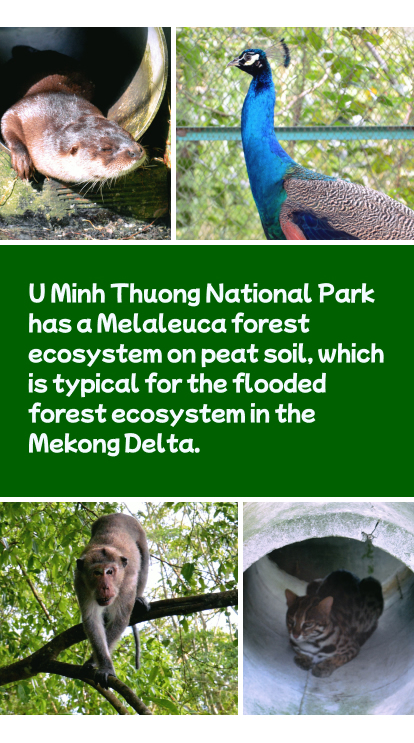
U Minh Thuong National Park is also a place to preserve traditional cultural and historical values of the nation through two periods of resistance against French colonialists and American imperialists. In addition, U Minh Thuong National Park is also bestowed with many beautiful natural landscapes of the river region, many canals, naturally flooded swamps, and characteristic red water sources from a thick peat layer and decomposed Melaleuca leaf essential oil.
U Minh Thuong National Park is also a place to preserve revolutionary historical relics during the war periods of the army and people in the Southwest region. This is a place to educate the nation's heroic revolutionary traditions, which is very suitable for developing the type of tourism that goes back to the source, cultural and historical tourism combined with ecotourism, creating diversity in tourism products.


U Minh Thuong National Park is located to the west of the Ca Mau peninsula, about 60 km south of Rach Gia city, the administrative center of Kien Giang province, and about 365 km southwest of Ho Chi Minh City, which is very convenient to access science and technology and is a very good condition for developing ecotourism.
The diversity in flora and fauna, especially the Melaleuca forest flora and typical bird and fish species, creates an U Minh Thuong wetland with many advantages in developing ecotourism. Types of tourism such as recreational fishing, exploring the Melaleuca forest, and culinary experiences will certainly be factors that make a difference in the tourism of U Minh Thuong National Park.
It can be said that coming to U Minh Thuong National Park, tourists will be able to explore with their own eyes the pristine Melaleuca forest, bird sanctuary, bat trough, and swamp ecosystem combined with observing wildlife at night. Explore swamp habitats and visit the distribution and feeding places of many seasonal waterfowl species. Combine tourism with scientific research on the alum-flooded Melaleuca forest ecosystem on peat soil, the unique place in Vietnam with this special ecosystem.

According to Dr. Tran Van Thang, Deputy Director of U Minh Thuong National Park, Kien Giang province has currently built the "Developing U Minh Thuong National Park eco-tourism, resorts, and entertainment for the 2022-2030 period" project. The project has a total investment of more than VND 230 billion, including budget capital, capital calling for socialized investment, and other legal sources in the 2024-2030 period.
According to the Kien Giang Provincial Planning for the 2021-2030 period, with a vision to 2050, the U Minh Thuong area and surrounding areas are one of four key areas for tourism development in Kien Giang province. In the Kien Giang Tourism Development Strategy until 2020, with a vision to 2030, activities of visiting the national park's creatures and scientific research of the Melaleuca forest ecosystem in the U Minh Thuong area are also identified as the province's specific tourism products.
In recent years, ecotourism in U Minh Thuong National Park has had certain developments and growth. The results of implementing targets on the number of tourists and revenue from tourism activities have affirmed the role and position of ecotourism in economic development and protection of natural resources and the environment.
This is a favorable condition to gradually exploit the inherent potential for tourism development and economic development while meeting the requirements of conservation and sustainable development of forest resources. If implemented effectively, revenue from tourism activities will contribute to supplementing financial resources for special-use forests and reducing the use of state budgets, and it will create many jobs for local people, contributing to the transformation of the local socio-economic structure.


U Minh Thuong National Park has been safely protected, overcoming the 2023-2024 dry season with many consecutive months of intense heat due to the impact of the El Nino phenomenon. Because of the peculiarity of Melaleuca forests growing on peat soil with a thickness of 0.3–1.2 m, the source of dry burning materials is very thick and is accumulated over many years, with an average thickness of up to 50 cm and a large amount estimated at more than 19 tons/ha. Therefore, when a forest fire occurs, it will be very difficult to control and extinguish. Furthermore, the forest fire prevention and fighting system, such as culverts, dams, and pumping stations, has not been fully invested; equipment and means of warning, forecasting, and detecting the risk of forest fires are still limited.

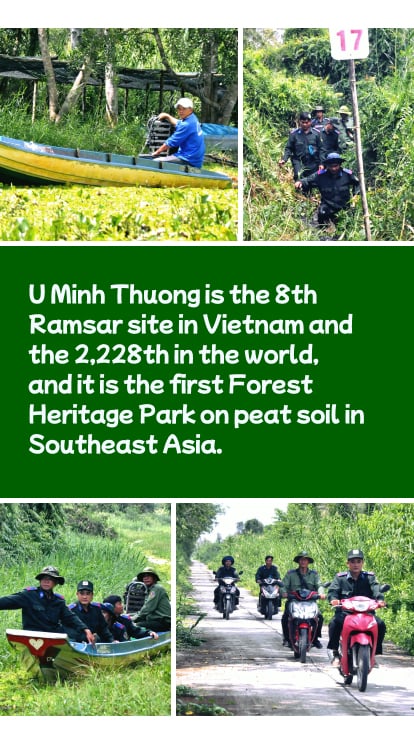
Mr. Hoang Van Tuan, Director of U Minh Thuong National Park, said that in order to protect the forest through the harsh drought season, right from the beginning of the dry season, the National Park has implemented a forest fire prevention and fighting plan in 2024 with synchronous and effective solutions. Continue to thoroughly grasp and strictly implement the legal regulations on forest protection and forest fire prevention and fighting.
Conduct surveys, evaluate, and build a digital map of key areas with potential risks of forest fires, including water sources, traffic, access directions, etc. Practice forest fire prevention and fighting plans according to the motto "4 on-spot" and a plan that mobilizes many forces and means to participate in the situation of complex, spreading fire to handle effectively when a fire occurs.
Organize communication, education, and dissemination of laws in the area to raise people's awareness and responsibility in forest protection and forest fire prevention and fighting. Be proactive, improve capacity, and apply modern science and technology in warning and forecasting forest fire risks. Timely and effectively handle forest fire prevention and fighting, requiring not to let forest fires occur in the core area. When fires do occur, they are detected early, promptly controlled, and minimized damage caused by forest fires.
In addition, the awareness of some people living near the forest is still limited, so they still go into the forest to hunt wild animals, aquatic products, and catch bees during the dry season, putting pressure on forest resources. Through patrol and control work, throughout the area under the management of U Minh Thuong National Park, 10 cases of forestry law violations with 14 subjects were detected. Of which, four cases with seven subjects went into the forest to hunt wild animals; two cases with three subjects caught bees; one case with one subject violated regulations on forest fire prevention and fighting; and three cases with three subjects violated the contracting of protection forest land. Forest rangers have confiscated hundreds of illegal tools and equipment, such as traps and nets.

